Many of his new ideas simply became an accepted part of what we know about this planet; others were superseded by his colleagues and successors. However, between the 1820s and 1850s Alexander von Humboldt was one of the most widely admired public figures in the world.
Humboldt, who died at 89, traveled on four continents, wrote more than 36 books and 25,000 letters to a network of correspondents around the globe. He had an infectious personality and boundless curiosity, surrounded himself with some of the leading minds of his era and never stopped talking. Charismatic, annoying, exuberant, caustic, but undeniably relevant, Humboldt straddled the enlightenment penchant for wanting to know everything about everything and the establishment of modern scientific methods designed to query that accrued knowledge.
He claimed to sleep only four hours a night and called coffee “concentrated sunbeams.” Among his many scientific achievements, Humboldt theorized the spreading of the continental landmasses through plate tectonics, mapped the distribution of plants on three continents and charted the way air and water move to create bands of climate at different latitudes and altitudes. He tracked what became known as the Humboldt Current in the Pacific Ocean and created what he called isotherms to chart mean temperatures around the globe. He observed the relationship between deforestation and changes in local climate, located the magnetic equator and found in the geological strata fossil remains of both plants and animals that he understood to be precursors to modern life forms, acknowledging extinction before many others.
Listen to Sidedoor: A Smithsonian Podcast
The fifth season of Sidedoor aired this episode, "The Last Man Who Knew It All," about how Alexander von Humboldt, through science and art, inspired a key part of America's national identity.
Some of the brightest minds and prominent scientific thinkers of the era embraced Humboldt’s expansive thinking: inspired by Humboldt’s early publications, Charles Lyell drew confidence in outlining his Principles of Geology; Charles Darwin idolized Humboldt, whose encouragement contributed to Darwin’s developing theories regarding the evolution of species. Humboldt’s friend Goethe proclaimed that he learned more from an hour in Humboldt’s company than he did spending eight days reading other books.
For Humboldt’s U.S. audience, it was his travel narratives rather than his scientific monographs that ignited the imagination. Before Cosmos, Humboldt had published 34 other volumes, all sharing an evolving articulation of his underlying premise of the unity of nature. His Essay on the Geography of Plants was published in 1805, followed by Aspects of Nature in 1808. Relation historique du voyage aux regions équinoxiales du nouveau continent is an 11-volume compendium of his travels through the Americas. Its English translation became known as the seven-volume Personal Narrative of Travels to the Equinoctial Regions of the New Continent, during the Years 1799–1804 and four-volume Political Essay on the Kingdom of New Spain. In 1826 he published the Political Essay on the Island of Cuba and, after that, several books stemming from his 1829 trip across Russia. Interspersed with these travel volumes he produced separate monographs devoted to astronomy, botany, geology, mineralogy and zoology.
Alexander von Humboldt and the United States: Art, Nature, and Culture
Alexander von Humboldt (1769–1859), one of the most influential scientists and thinkers of his age, visited the United States for six weeks in 1804, engaging in a lively exchange of ideas with such figures as Thomas Jefferson and the painter Charles Willson Peale. It was perhaps the most consequential visit by a European traveler in the young nation's history, one that helped to shape an emerging American identity grounded in the natural world.
Over the course of his adult life he developed a revolutionary theory that all aspects of the planet, from the outer atmosphere to the bottom of the oceans, were interconnected — a theory he called the “unity of nature.”
It is hard to overstate how radical an idea this was in its day. After spending more than 30 years amassing data and testing ideas, Humboldt delivered a series of lectures in Berlin in 1827, describing theories that electrified his audience. From these lectures, he began drafting the book that would cement his lasting significance, as he described to his close friend, Varnhagen von Ense, in 1834:
I am going to press with my work, — the work of my life. The mad fancy has seized me of representing, in a single work, the whole material world, — all that is known to us of the phenomena of heavenly space and terrestrial life, from the nebulae of stars to the geographical distribution of mosses on granite rocks; and this in a work in which a lively style shall at once interest and charm. Each great and important principle, wherever it appears to lurk, is to be mentioned in connection with facts. . . . My title at present is 'Kosmos; Outlines of a description of the physical World'. . . . I know that Kosmos is very grand, and not without a certain tinge of affectation; but the title contains a striking word, meaning both heaven and earth.
Humboldt’s singular text grew to fill five volumes, which were written in the last decade of his life to summarize all that he had learned in his scientific research based on his idea of the unity of nature. From the inaugural publication of the first volume in 1845, Kosmos — translated in English as Cosmos: A Sketch of the Physical Description of the Universe — was an international best seller, with publishers vying for shipments of the book in at least 26 countries. Cosmos was translated almost as fast as it was published, was serialized in popular magazines and inspired a generation of naturalists, explorers, artists and authors.
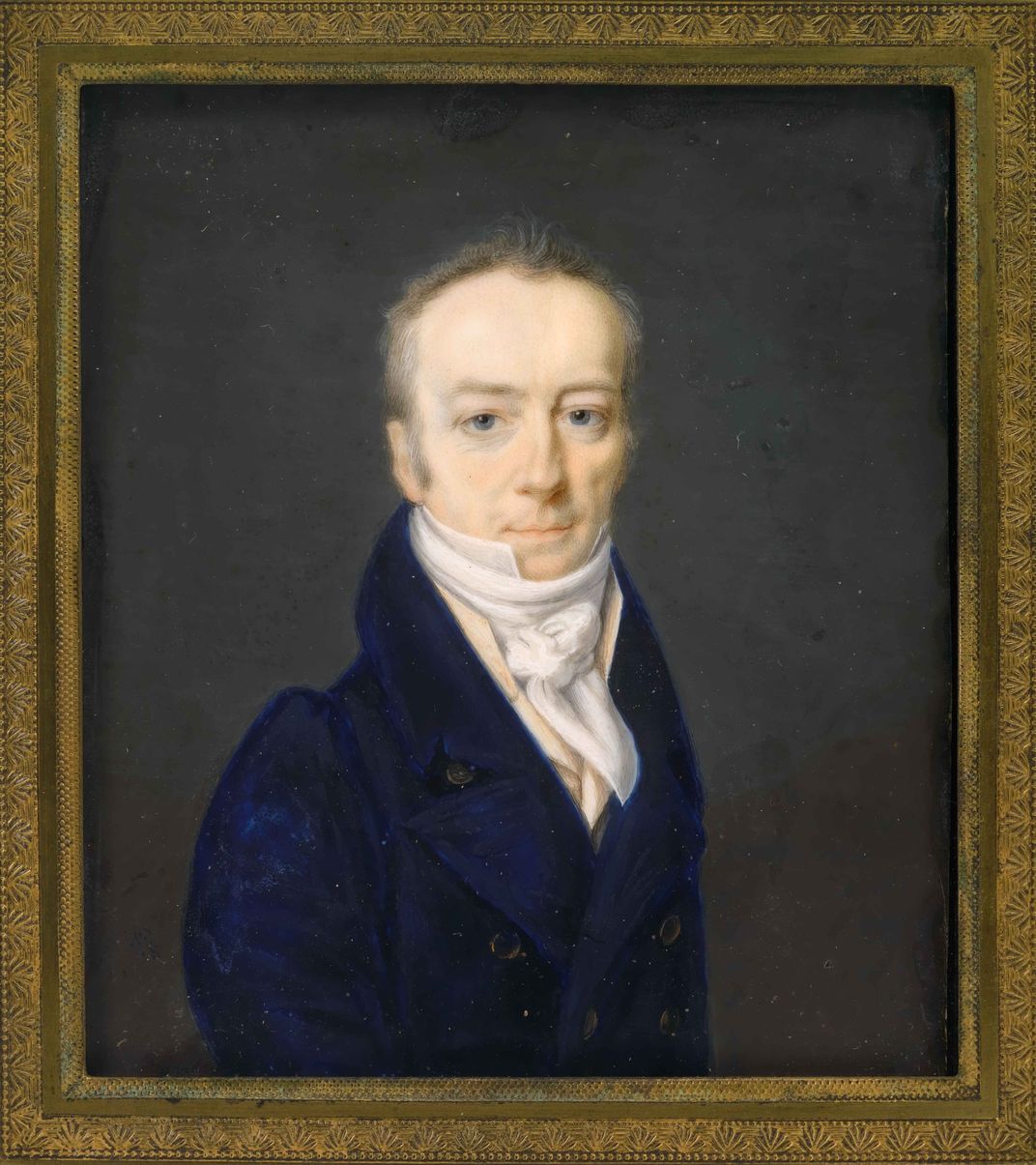
When Humboldt traveled to England in 1790, he met a young chemist named James Smithson, who became another part of Humboldt’s expanding network and, later in his life, was the founding benefactor of what became the Smithsonian Institution. Humboldt spent five years traveling across South America, Mexico and Cuba between 1799 and 1804. Along the way Humboldt did more than gather plant specimens and artifacts; he witnessed the Transit of Mercury and discovered the location of the magnetic equator. That signature measurement allowed him to recalibrate his equipment and take the most accurate readings to that point of longitude and latitude in the Americas. Humboldt’s trip corrected the location of numerous cities across South America and Mexico, literally recalibrating American cartography. He constructed the most detailed map of central North America, extending north from Mexico to the Canadian border. Sharing that map with Jefferson may have been the single most significant contribution Humboldt made to American geopolitics.
One measure of Humboldt’s deep impact in the U.S. is the outpouring of grief when news of the eminent naturalist’s death spread across the globe in 1859. In the U.S., the New York Times and Harper’s Weekly devoted extensive coverage to eulogize him, enumerating Humboldt’s achievements, extolling his significance and amplifying the emotional response to news of his death.
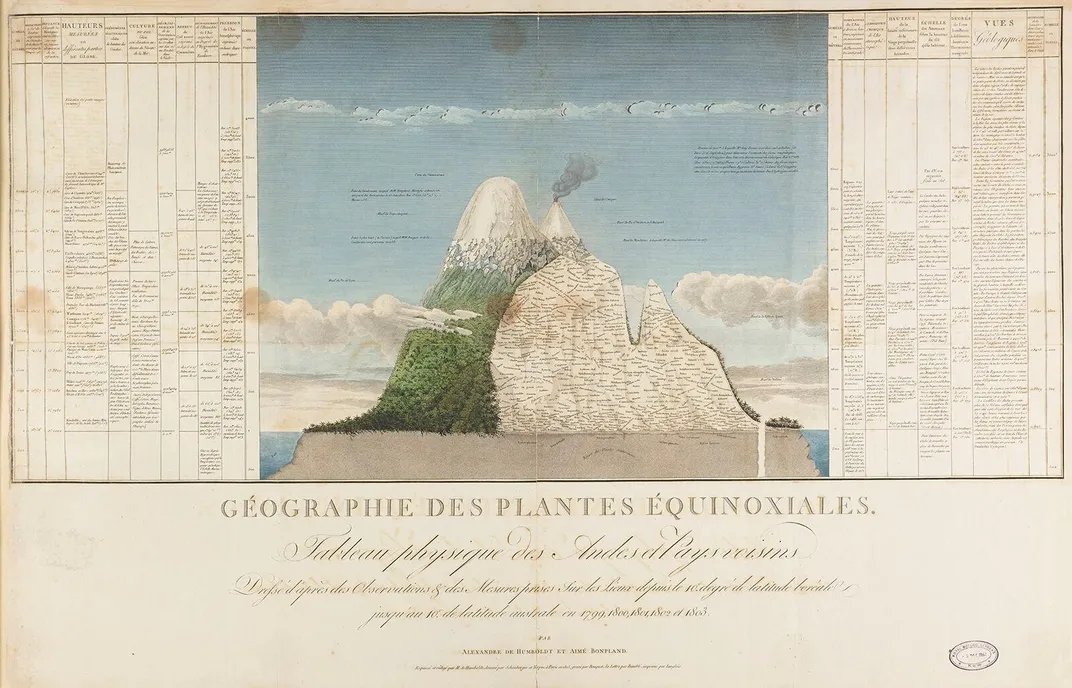
Ten years later, in 1869 — the centennial of Humboldt’s birth — the world again gave itself over to celebrating Humboldt’s name and reputation and remarking on the progress others had made standing on his broad shoulders. Once again Humboldt dominated the front page of American newspapers. The New York Times devoted extensive coverage to what was being called the “Humboldt celebration.” In Boston, Harvard professor Louis Agassiz, perhaps the leading scientist of his generation and a Humboldt protégé, delivered a heartfelt address and choreographed a program of eulogies and inspirational speeches by the leading authors and scientists of the day. It was clear, both in 1859 and in 1869, that this country owed much to Humboldt’s curiosity, writings, support and international networks of influential people.
Ralph Waldo Emerson, who spent more than 30 years reading Humboldt, was among the speakers at the 1869 Boston celebration. In his description, we get a sense of how even Emerson struggled to express the magnitude of Humboldt’s accomplishments:
Humboldt was one of those wonders of the world, like Aristotle, like Julius Caesar, like the Admirable Crichton, who appear from time to time, as if to show us the possibilities of the human mind, the force and the range of the faculties, — a universal man, not only possessed of great particular talents, but they were symmetrical, his parts were well put together. As we know, a man’s natural powers are often a sort of committee that slowly, one at a time, give their attention and action; but Humboldt’s were all united, one electric chain, so that a university, a whole French Academy, travelled in his shoes. With great propriety, he named his sketch of the results of science 'Cosmos.' There is no other such survey or surveyor.
Channeling Humboldt in the United States
In my work on American landscape painting, I knew that Humboldt had inspired American artist Frederic Edwin Church to travel to South America and that his influential advice to landscape painters formed a substantial component of his second volume of Cosmos, published in English in 1849.
Humboldt was a lifelong abolitionist and had supported John C. Frémont’s 1856 presidential campaign. He had visited the U.S. and met with Thomas Jefferson. Those connections were myriad and complex, much like everything else in Humboldt’s long life. In excavating Humboldt’s influence in the U.S., I took a deep dive into Humboldt’s world to better understand how his brief time in the U.S. emboldened this country to continue adopting nature — the concept of wilderness, specifically —as an emblem of the scale and scope of our cultural ambitions. Humboldt’s six-week visit shaped the cultural identity of the U.S. in the image of its landscape, from majestic formations like Natural Bridge and Niagara to an appreciation of the Great Plains as a “shoreless ocean” rather than a “great desert.”
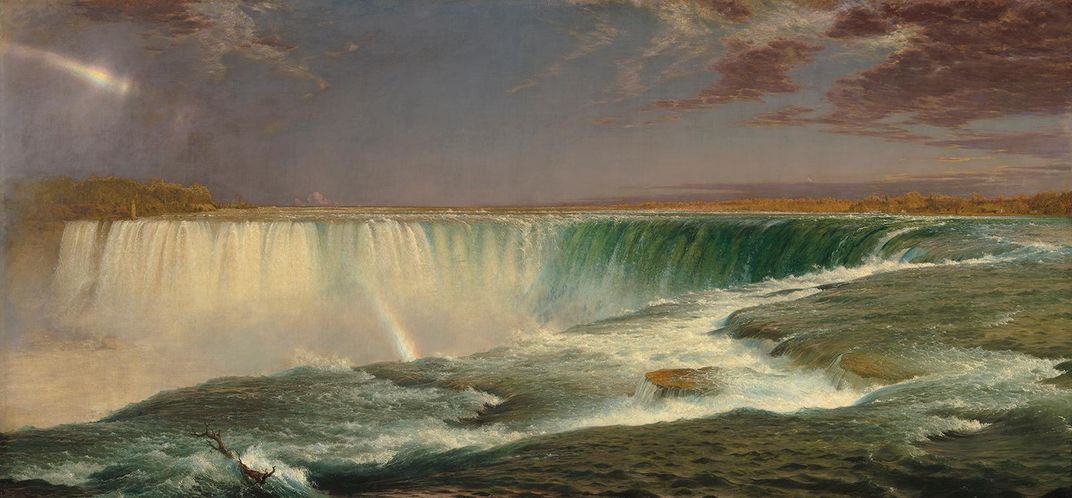
Humboldt’s brief 1804 stay in the U.S. established the foundation of his extensive network of friends and admirers there. Meriwether Lewis and William Clark had just embarked on their exploration of the newly acquired Louisiana Purchase, and Jefferson was in the midst of contentious international negotiations with France and Spain over the new southern and western borders of the U.S. Humboldt arrived with maps and statistics that helped Jefferson and his cabinet think strategically about those negotiations. The Prussian traveler’s effusive personality and unbounded curiosity about American geography, culture and politics sparked lifelong friendships with some of the key figures of American history.
Beyond politics, Humboldt inspired artist Charles Willson Peale to resume his dormant painting career to paint Humboldt’s portrait for his museum. In Philadelphia he was feted by the scientific community. His early publications already graced the shelves of the library of the American Philosophical Society, which made him a member. However, it was after this visit that Humboldt would become a force of nature himself. For the remaining 50 years of his life, people in the U.S. became part of Humboldt’s global network of friends, allies and scientific partners. Those alliances helped define the nation; America’s presence on the international stage shone brighter with Humboldt’s approbation, an imprimatur many in the U.S. assiduously cultivated.
Humboldt’s early publications appeared in the years immediately following his South American travels. His lectures and books established his reputation as a leading mind in the natural sciences. His eagerness to absorb the new information from the U.S. added another dimension to American exploration. American explorers knew their maps, measurements, statistics and expedition narratives would make their way into his hands. Updated maps and illustrated books were the lingua franca of expedition reports. Each American contribution to this international enterprise found its way into Humboldt’s growing library, and details from them appeared in the Prussian baron’s works. Further, Humboldt encouraged the addition of artists as members of those expeditions. In particular, Stephen Harriman Long and John C. Frémont conducted expeditions using Humboldt’s ideas and books as their inspiration. The published report from the Long Expedition later served as a foundation for literary descriptions of the American interior that would in turn become an important aspect of the Hudson River school landscape aesthetic. Frémont’s narratives helped create his persona as the Pathfinder and earned him the appellation among explorers of “the American Humboldt.” During the 19th century, the scientific journey became an epistolary venture in which distance became a metaphor for reach.
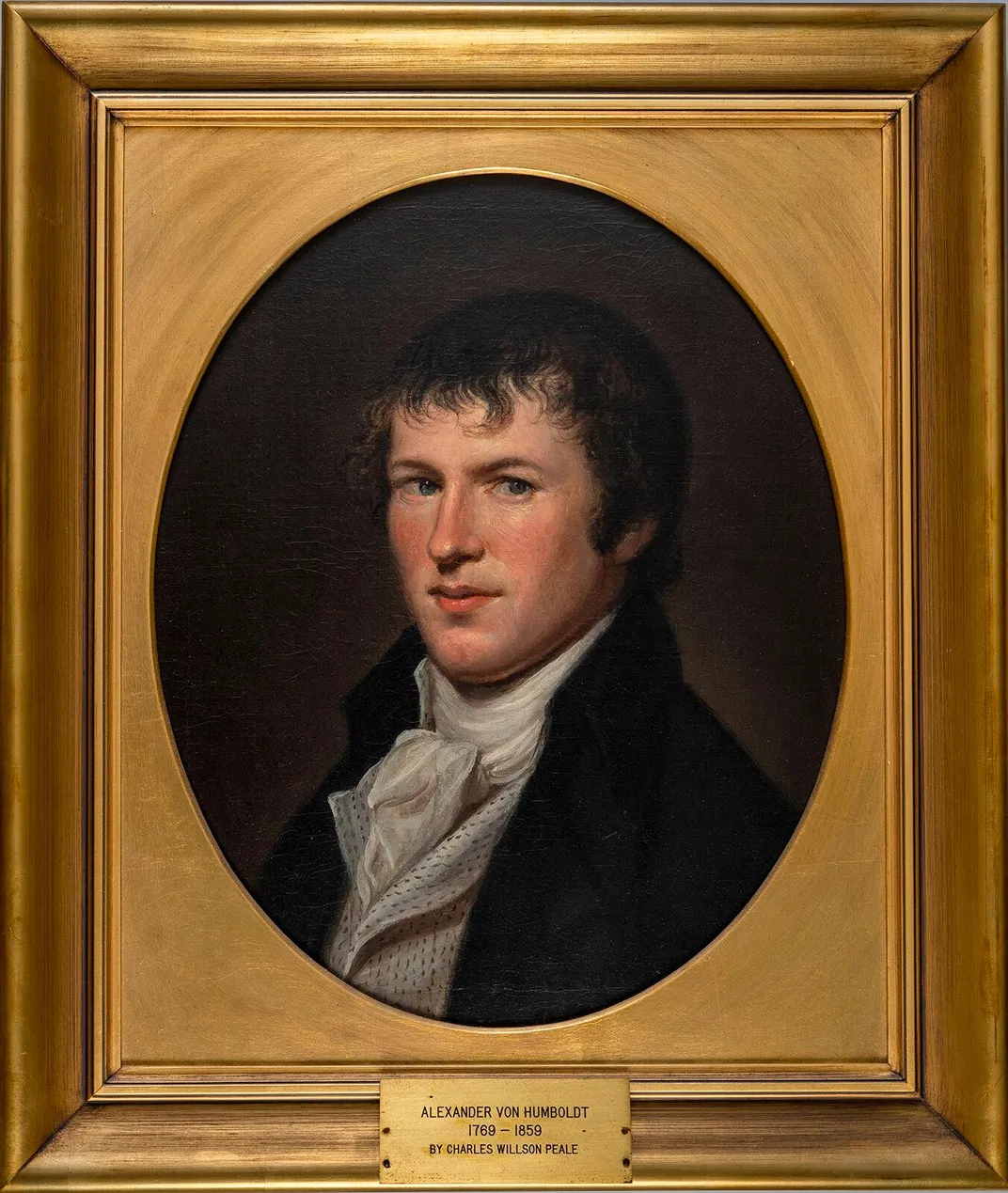
Humboldt had always intended to return to the U.S., but each successive venture he undertook and each new volume he published delayed and ultimately defeated that goal. Thus Humboldt cultivated proxies — explorers who traveled to the U.S. in his stead and with his support. The information assembled from these journeys flowed directly to Humboldt — population statistics, ethnographic information and artifacts, natural history specimens and cartographic measurements. All of this was designed to fill the gaps in his increasingly comprehensive understanding of landforms; the global distribution of plants, animals and people; and how climate operated as a force on everything.
This path to the increase and diffusion of knowledge — something of a buzzword during the Enlightenment — was navigated through lavishly illustrated publications. The market for these books crested with the wave of popularity experienced by Humboldt as he wrote, illustrated, and published volume after volume based on his five years in the Americas — an enterprise that ruined him financially but contributed to his global fame.
Humboldt’s believed that the New World should not be measured using the standard of architectural wonders found in the Old World. Europeans looked to the built environment — like cathedrals and universities — as evidence of cultural significance. As such, they saw the Americas as continents devoid of history.
Instead Humboldt argued, “Nature herself is sublimely eloquent,” applying aesthetic theory and vocabulary to descriptions of the natural monuments boasted by the New World. His embrace of nature as an impressive attribute symbolic of cultural prowess encouraged the development of a wilderness aesthetic in the U.S. As early as the 1780s the nascent United States had tentatively adopted a nature-inflected sense of identity thanks to Thomas Jefferson’s Notes on the State of Virginia, which was read widely in French and English among the literary and scientific elite on two continents.
In this slim volume, Jefferson enumerated the myriad ways American geography, agriculture, commerce and people were in no way inferior to their European counterparts. His narrative and statistics refuted the statements made by the influential European naturalist George-Louis Leclerc, the Comte de Buffon, that all aspects of the New World were smaller, weaker and more degenerate than their European counterparts. The discovery of the bones of mastodons — at that time recognized as the largest terrestrial creature known on the planet — in present-day Kentucky and upstate New York seemed further proof that Buffon’s theories were at best false and pernicious.
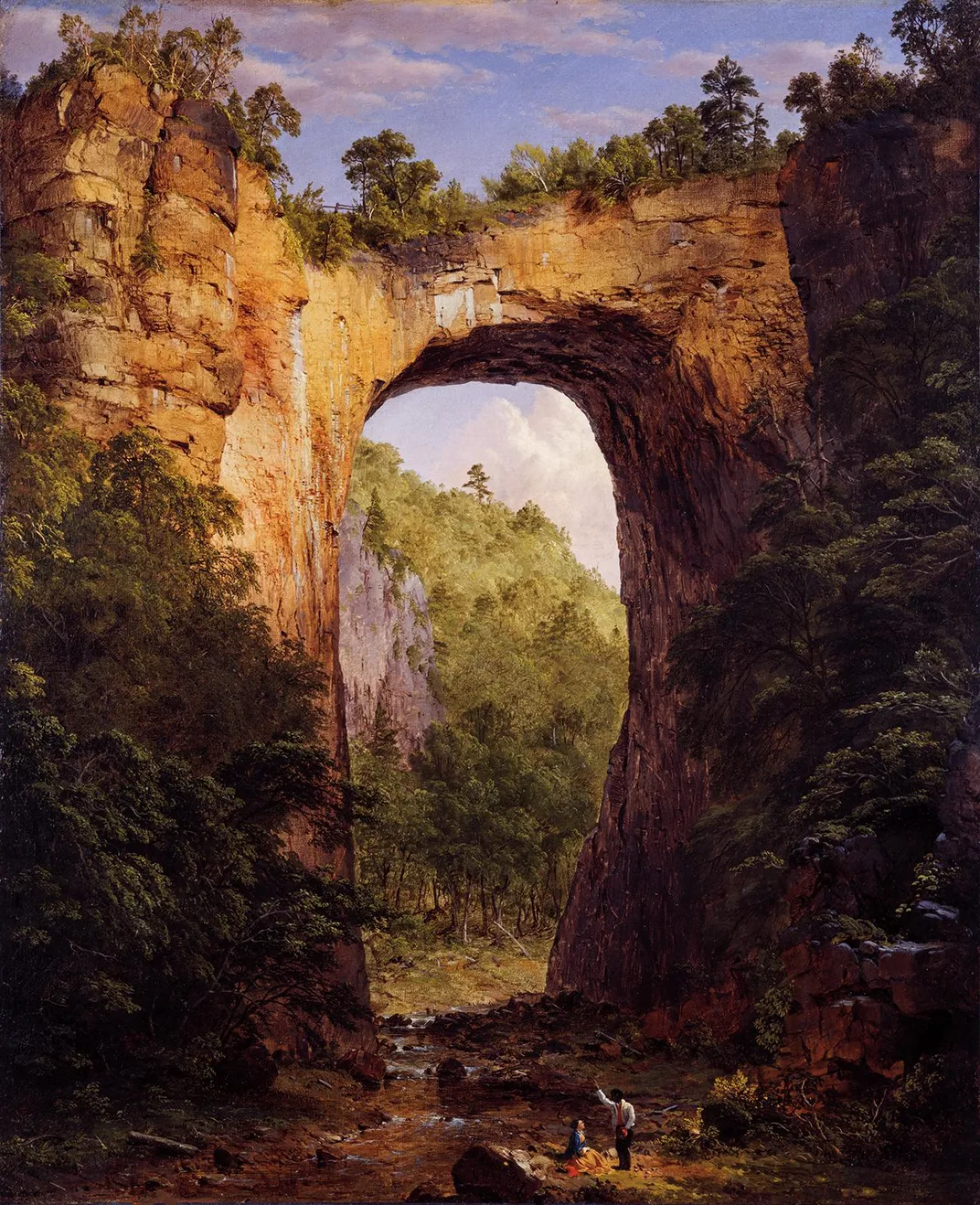
Jefferson’s book staked out the position that America’s cultural prospects were tied to the awe-inspiring scale and uniqueness of the very things found within its borders. He further argued that features like Virginia’s Natural Bridge and New York’s Niagara Falls were evidence of American geographic superiority. In doing so, he laid a foundation for erecting a cultural identity grounded in that strength. Humboldt amplified and encouraged these values in the first books he published after visiting the Americas, in which he began to articulate his concept of nature. His imprimatur contributed to the development of America’s wilderness aesthetic, which in turn gave rise to the Hudson River school. This generation of artists elevated the genre of landscape painting by presenting landmark features as emblems of America’s cultural ambitions. Humboldt’s keen eye, observant curiosity and scientific rigor provided the secular framework for exploration and admiration of nature; America’s belief in the ability to find God in the wilderness joined hands with data gained through exploration to blend scientific relevance with divine inspiration.
If Humboldt’s books were guides to the New World, he was one of the principal destinations for travelers to the Old World. Following the War of 1812, the vogue for visiting Humboldt in Europe grew. He became the center of an interconnected web of correspondents, colleagues and admirers, many of whom were Americans. From his perch in Paris, Humboldt played a central role in French scientific societies. With each publication, the world took greater notice of Humboldt’s ideas. By the 1820s Humboldt’s words and images became an integral part of the American school curriculum, and lengthy excerpts from his books appeared frequently in the leading literary and scientific journals. The litany of American luminaries who beat a path to his door is an astounding array of politicians, statesmen, authors, intellectuals, artists and scientists.
Humboldt, “half an American” by his own reckoning, was a man who admired and espoused American ideals. In Paris, Humboldt and the Marquis de Lafayette stood at the center of a group of liberal thinkers who supported the U.S. and welcomed American travelers. Both men saw in American democracy a template for saving Europe from monarchical and dictatorial ruin.
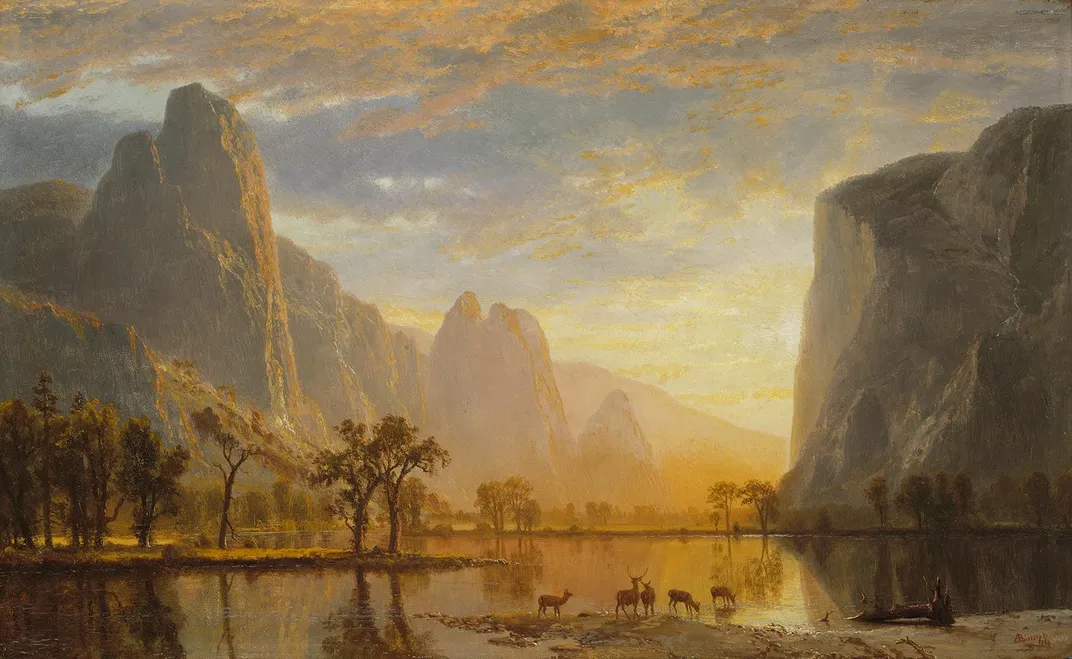
Humboldt’s liberal politics and outspoken support of America endeared him to this country while placing him at odds with the French emperor. The mutual dislike between Humboldt and Napoleon serves as a framework for understanding how and why Humboldt sought faster and more reliable networks of communication across Paris, the continent and ultimately the Atlantic Ocean. He befriended Americans who were able to enhance the establishment of those relays. Washington Irving, James Fenimore Cooper and Samuel F. B. Morse formed part of that network. Humboldt’s eagerness to advocate for Morse’s telegraph and subsequently, the laying of the transatlantic cable, spoke to his desire to be in contact with his allies and advocates instantaneously and without Napoleonic interference. For Humboldt, knowledge was intended to be shared — disseminated as widely as possible without artificial restrictions. Humboldt’s connections stretched like telegraph wires into American politics as well as the fine arts and the sciences.
Humboldt’s advocacy for the U.S. was not uncritical. He held an unequivocal stance on American slavery. An adamant believer in racial equality, Humboldt railed against colonial rule and enslavement. He associated nature with an inherent right to individual freedom for all humankind, and he believed societies and governments must protect that right. Although he sidestepped engaging directly with Jefferson on the issue, he spared little anger in his correspondence with those in his close circle. As early as 1825 he feared that the perpetuation of slavery in the U.S. would be the country’s undoing, prescient thoughts that he shared with many in his American network.
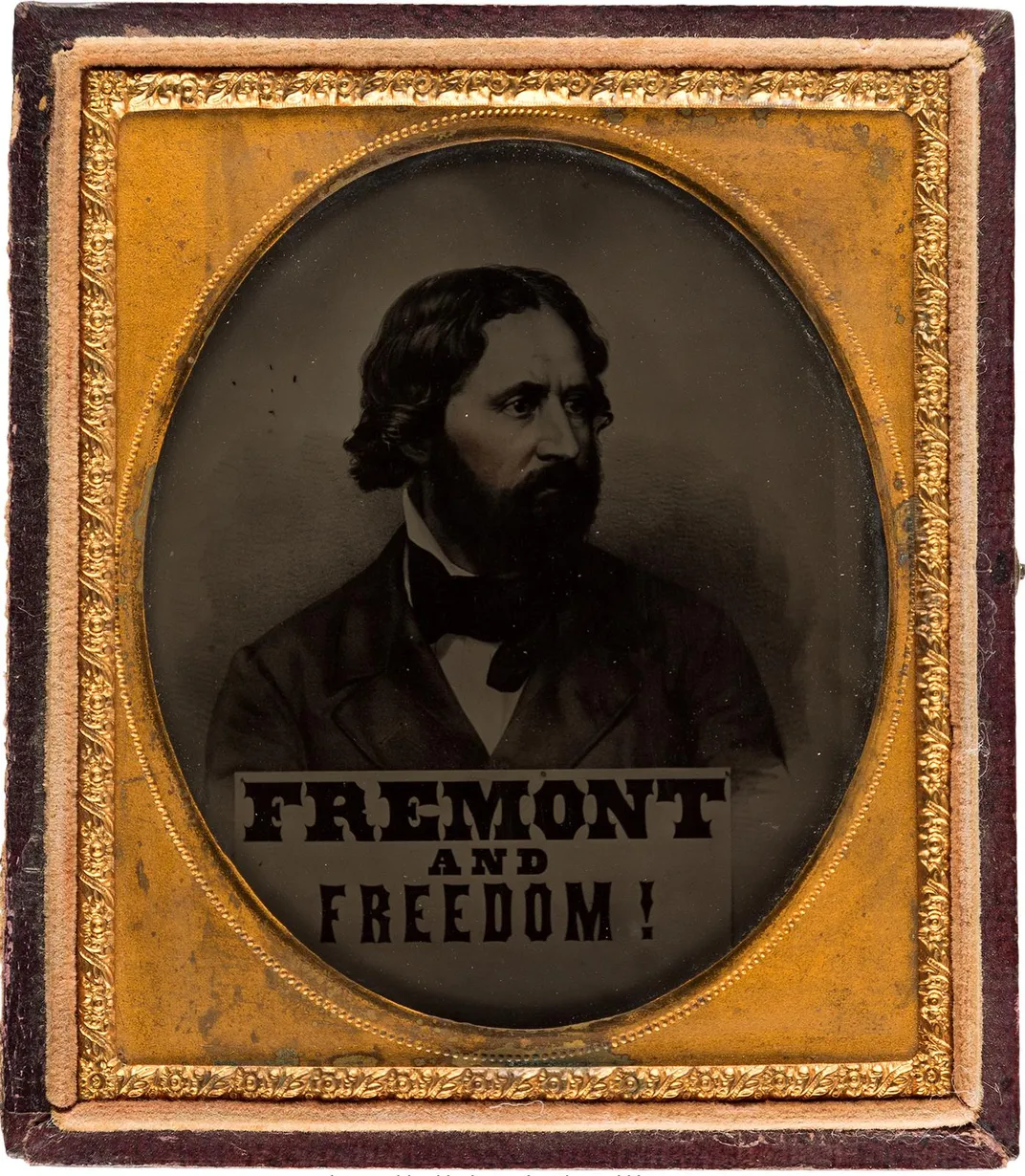
Humboldt’s fervent desire to see America as an exemplar of a true democracy kept him close to this country’s leading figures but simultaneously left him frustrated at his inability to gain traction on this most important issue. That engagement with American politics peaked with Humboldt’s vocal support for John C. Frémont’s 1856 presidential campaign as the first Republican candidate, running on an abolitionist platform inspired by Humboldt. Frémont had conducted five of his own expeditions into the American West, displaying his admiration for Humboldt by naming as many landscape features for the explorer as he could. Frémont also played a role in California politics during the final push toward statehood. California unexpectedly entered the Union in 1850 as a free state, and the California landscape — notably that of Yosemite — became the emblem for the promise of liberty in a nation soon plunged into civil war.
Before he had left the U.S., Humboldt expressed concern for the cultural well-being of America’s Native populations, quizzing Jefferson on his relationship with the various nations. Humboldt’s travels in South America had convinced him that the indigenous people he encountered were descendants of advanced civilizations destroyed by generations of Spanish colonial rule. Democracy, in Humboldt’s mind, should extend to all inhabitants of a nation, regardless of race or standing.
When Catlin took his massive Indian Gallery to Europe, he engaged a group of traveling Iowa (Báxoje) Indians to perform for the audience. Humboldt met the American artist-impresario and the 13 Iowa who accompanied him to Paris in 1845. For the first time, Humboldt had direct conversations with Native peoples from the U.S. Catlin and Humboldt established a friendship that remained strong the rest of Humboldt’s life. Their friendship sheds light on one of Humboldt’s core principles — that he could discern the value in a relationship without dismissing someone with whom he disagreed. In a similar manner, Humboldt was able to admire Louis Agassiz for his work on glaciation and admire his data on comparative anatomy and yet vehemently disagree with his protégé’s conclusions on the superiority of the Caucasian race.

The publication of Cosmos made Alexander von Humboldt perhaps the best known public intellectual figure anywhere on the globe. In the U.S. Cosmos inspired Frederic Church’s enthusiastic embrace of science and art, Emerson’s seminal essay Nature, Henry David Thoreau’s Walden, and Walt Whitman’s poetic self-portrait in Leaves of Grass. During the 1850s there was a conscious effort on the part of these men to frame Humboldt as a distant mentor. Humboldt’s views shaped the career of landscape painter Frederic Church. Church’s debt to Humboldt is the best understood American artistic response to the naturalist’s vision of the unity of nature. Reading Humboldt’s advice to landscape painters calibrated Church’s dual interests in science and art. His two trips to South America were directly inspired by Humboldt.
Humboldt’s ideas inflected every aspect of Church’s artistic production, including subjects far removed from the artist’s South American subject matter. Church gladly embraced the opportunity to adopt a Humboldtian mantle for his artistic persona. In so doing he reaffirmed the significance of landscape painting as the genre most capable of conveying America’s cultural ambitions. In a similarly immersive manner, transcendentalist writers Ralph Waldo Emerson and Henry David Thoreau embraced Humboldt, providing a literary counterpart to Church’s expansive vision and attention to details in nature. Walt Whitman, ever his own idiom, deployed "Kosmos" as a metaphor describing his own persona. The idea that one could embody Cosmos, whether in a painterly or literary oeuvre, was a hallmark of the American fascination with Humboldt.
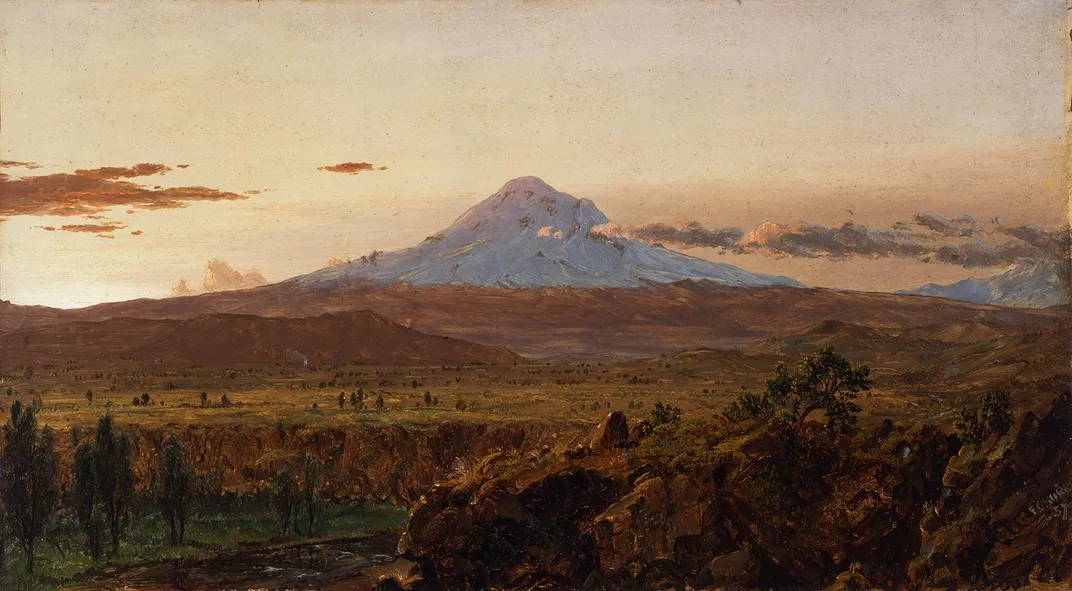
Alexander von Humboldt’s legacy foregrounds the actual and intellectual founding of the Smithsonian Institution. James Smithson’s decision to leave his fortune to create an institution in Washington, D.C., “for the increase and diffusion of knowledge among men” was unexpected, but the roster of men charged with determining how best to live up to that lofty yet vague dictum were almost all Americans whom Humboldt had met or inspired. Humboldt’s name was invoked repeatedly as the proponents of the institution hammered out its parameters. With the founding of the Smithsonian in 1846, America was able to deliver back to Humboldt the benefit of its own far flung scientific investigations. By this time Humboldt had his own emissaries to the Smithsonian, and every publication bearing its name found its way to him. Humboldt’s imprimatur still mattered, as much as it had to Jefferson and Gallatin a half a century earlier. The desire for a national institute, a place that could absorb the collections of specimens and the accrual of knowledge from expeditions and scientific inquiries had been a tantalizing prospect as far back as the founding of Charles Willson Peale’s museum in Philadelphia in 1786. Now the Smithsonian was poised to adopt a Humboldtian mantle. Over the years it would become the American repository for every branch of knowledge the Prussian traveler and natural philosopher had pursued.
The Absorption of Humboldt
Humboldt spent his lifetime increasing knowledge, and as that knowledge diffused, so too did the connection to his name. During the 19th century, towns, counties and streets across the U.S. bore his name; in the decade following his death, statues were erected in parks across the country. When the Nevada Territory petitioned for statehood in 1864, Humboldt was one of the options for the new state’s name. The celebrations in his honor continued in the U.S. until the early 20th century.
Louis Agassiz noted in 1869 that Humboldt’s name was invoked less and less as the years passed, though his ideas continued to circulate widely. In his centennial address he remarked that every school child in America had been taught by Humboldt without ever knowing their teacher’s name.
In the U.S., although Humboldt’s name had vanished, his ideas did not. When Rachel Carson wrote Silent Spring in 1962, her argument for saving the American bald eagle by banning the use of DDT drew on the same logic of interrelated downstream consequences Humboldt had postulated regarding local human-induced climate change at Lake Valencia in Venezuela in 1800.
With the rise of the environmental and conservation movements of the 20th century, Humboldt’s ideas have gained renewed traction and gradually his name has become re-associated with those once radical ideas of planetary interconnectedness and the emergence of climate science in this era that some have designated as the Anthropocene. Alexander von Humboldt is experiencing a renaissance with this rise in eco-awareness, visible in contemporary fine arts practice as well as across the sciences, as befits his own broad reach.
“Humboldt: Epic Explorer” premiered on the Smithsonian Channel Wednesday, March 25, 2020 at 8 p.m.
The exhibition “Alexander von Humboldt and the United States: Art, Nature, and Culture” was on view at the Smithsonian American Art Museum September 18, 2020 through January 2, 2021.
A Note to our Readers
Smithsonian magazine participates in affiliate link advertising programs. If you purchase an item through these links, we receive a commission.
/https://tf-cmsv2-smithsonianmag-media.s3.amazonaws.com/filer/36/b7/36b752b6-1fbe-42c7-bb4c-68fc71194a8e/longform_mobile.jpg)
:focal(1095x295:1096x296)/https://tf-cmsv2-smithsonianmag-media.s3.amazonaws.com/filer/1e/15/1e1534cf-02b8-4eed-874a-9f2371f0ac39/humboldt.jpg)
/https://tf-cmsv2-smithsonianmag-media.s3.amazonaws.com/accounts/headshot/IMG_0939-photo-by-libby-weiler_cropped_to_head_shot.jpg)
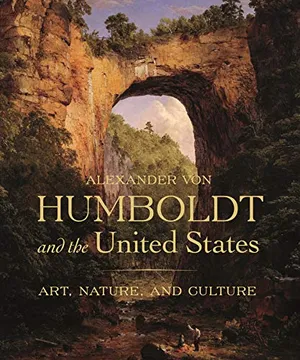
/https://tf-cmsv2-smithsonianmag-media.s3.amazonaws.com/accounts/headshot/IMG_0939-photo-by-libby-weiler_cropped_to_head_shot.jpg)